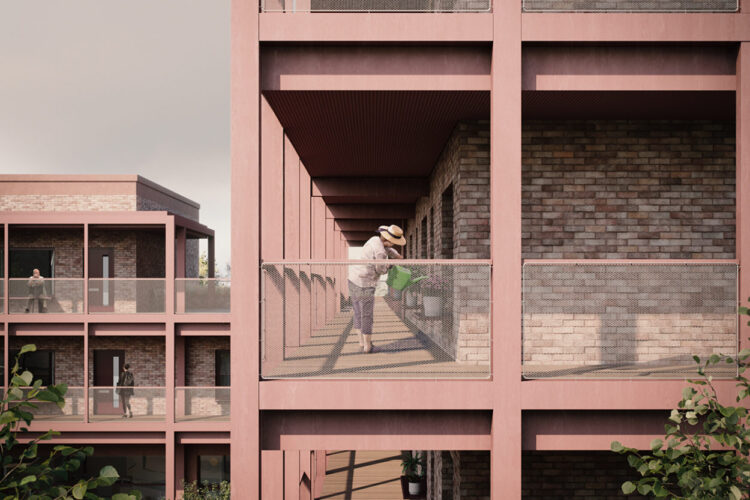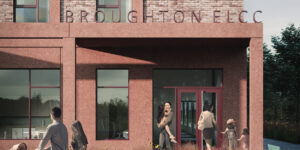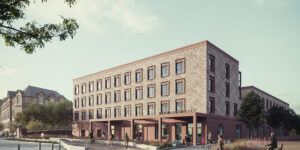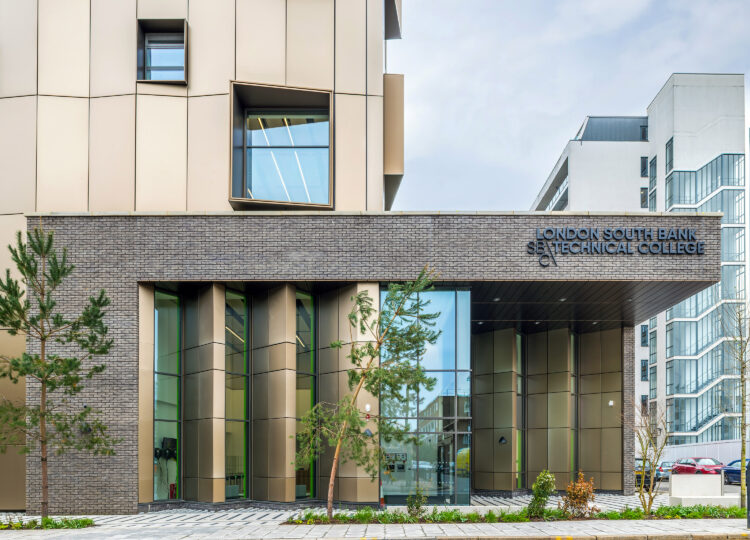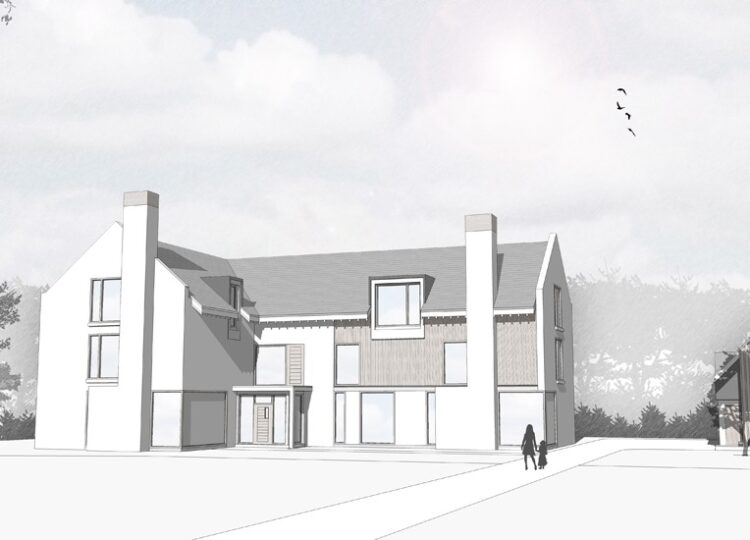The Powderhall proposals, the first of their kind in Scotland, include an intergenerational, Passivhaus facility which combines an Early Learning and Childcare Centre for 128 children with 27 older person’s independent-living homes above. This facility will offer health and wellbeing benefits for the residents, and new learning and social opportunities for children attending the nursery.
Designed to meet the Passivhaus standard, the building will provide high-quality spaces that are comfortable, healthy and consume minimal energy. This will create an optimal learning- through-play environment for the children and help to address the acute housing needs of our ageing population. All homes have been designed to allow residents to age in place and live within their community for as long as possible.
The building is designed to nestle into its context and employs a contemporary material palette of pigmented pre-cast concrete and brickwork, along with a repetitive window pattern and architectural detailing which reference the neighbouring buildings. The L-shaped form has been positioned to maximise benefit from solar gains, securely enclosing the south-facing nursery gardens, and providing active frontages to the entrance square and pedestrian routes. A portico connects the nursery and residential entrances which provides opportunity for chance encounters between the two user groups on their daily activities. In addition, a generous access balcony with integrated window seats provides a sheltered external area for residents to socialise and creates a visual connection to the nursery gardens below. Further resident’s areas include a shared roof terrace and communal garden with sensory planting.
The new Early Learning and Childcare Centre, which will be managed by Broughton Primary School, will allow for the existing nursery provision to relocate to this new facility. This will provide more childcare places for the local community and open up more space for the primary school. It will also have a multipurpose room which will be available for public use via the school lets system.
This phase of the regeneration project also includes a civic space which provides an attractive, biodiverse entrance into the site and demarks the threshold between Broughton Road and the pedestrian prioritised development. Improvements to St Mark’s Path, part of Edinburgh’s Quite Route network, are also proposed, together with a new outdoor educational space for Broughton Primary School, again available for community use via school lets.
Community consultation has been at the heart of the project and has helped shape the proposals from the earliest opportunity. Collective Architecture worked with the local community, stakeholders, and the council to collaboratively develop a place brief for the wider site before any design work had commenced. The place brief acts as a set of guiding principles for the whole site and has underpinned Collective’s masterplan strategy and their subsequent proposals for phases one and two.
Nicola McLachlan, Project Architect, said:
“The recent pandemic has reinforced the significant and detrimental impact that unsustainable living and social conditions can have on the quality of our lives, heightening our sense of accountability. The Powderhall mixed-use masterplan is reflective of an ambitious client and a participatory place-based design approach that has developed innovative and holistic living possibilities, taking proactive steps towards ensuring future communities are both socially and environmentally sustainable and successfully rooted with their surrounding neighbours. Phase 2 of the masterplan focuses on sharing, agency, and autonomy in the context of increasing age demographics, rising levels of loneliness, and takes cognisance of the significant shortage of older persons homes – particularly within urban areas. The proposals create a purpose-built intergenerational building where residents and nursery children can co-exist, nurturing positive relationships between different ages whilst creating a variety of spaces where people can enjoy interaction and sharing space and time together. The project marks a significant step towards designing with an agenda where well-being and improved quality of life for all generations is our measure.”
Carl Baker, Project Architect and Passivhaus Designer, said:
“The project contributes to The City of Edinburgh Council’s target of becoming a net zero carbon local authority, and the adoption of the Passivhaus Standard ensures this is a tangible aspiration. In addition to Passivhaus and the proposed renewable technologies, sustainability has been considered throughout the project from the co-location of services and the shared building elements, to the reduction of embodied carbon by incorporating a circular strategy. Furthermore, there are many benefits for the client and end users of this project which are provided by the intergenerational approach and in striving to achieve the Passivhaus Standard. Some of these will be felt immediately, while others such as long-term health improvements and access to a high-quality learning environment will be experienced for generations to come.”
Project website: https://www.collectivearchitecture.com/projects/powderhall-intergenerational-intergenerational-and-passivhaus-facility


